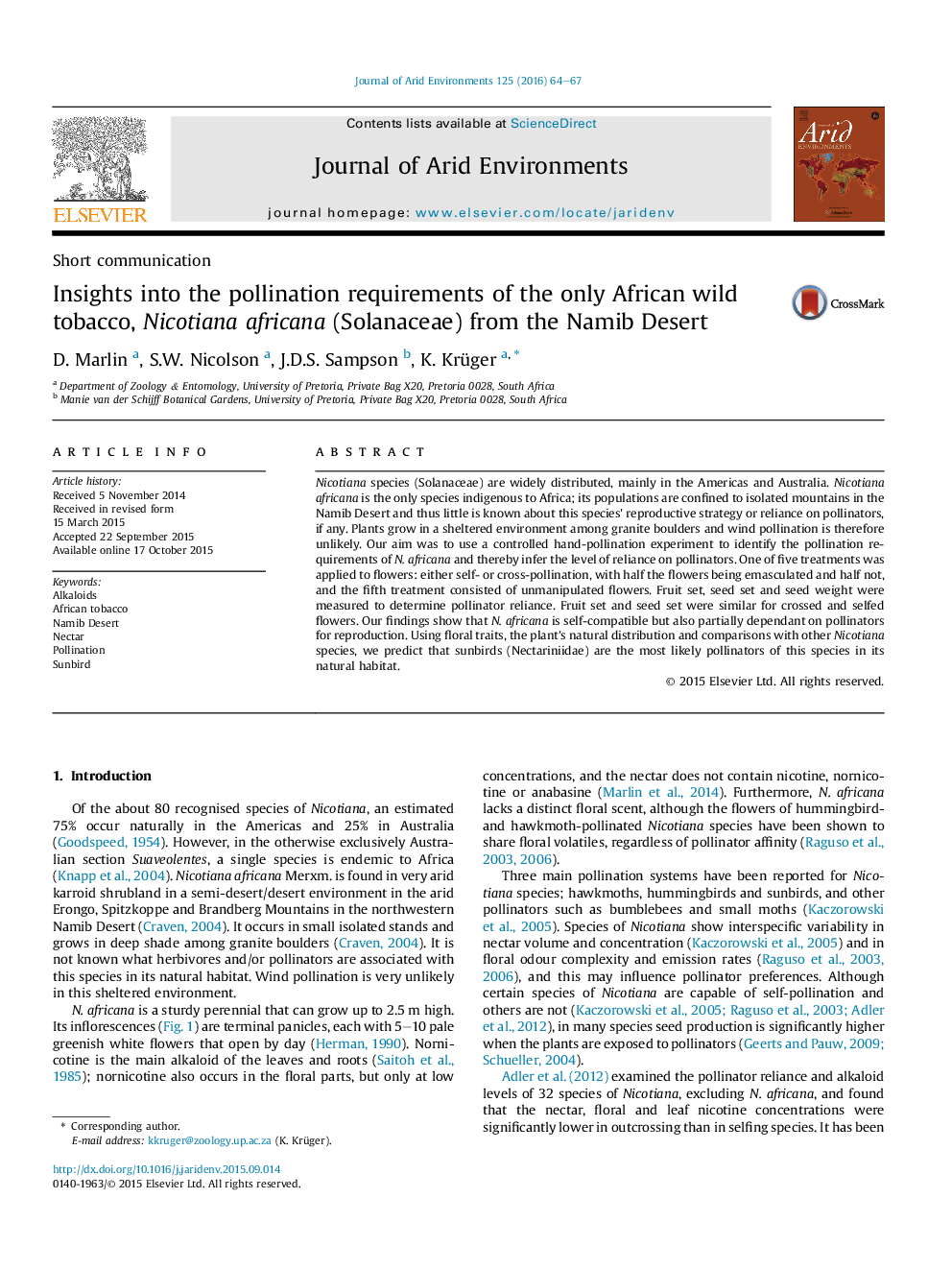| کد مقاله | کد نشریه | سال انتشار | مقاله انگلیسی | نسخه تمام متن |
|---|---|---|---|---|
| 4392788 | 1618234 | 2016 | 4 صفحه PDF | دانلود رایگان |
• Glasshouse Nicotiana africana were self- or cross-pollinated by hand.
• Fruit set and seed set were similar for crossed and selfed flowers.
• The self-compatibility index (SCI) indicated that N. africana is partially self-compatible.
• Sunbirds are potential pollinators of N. africana.
Nicotiana species (Solanaceae) are widely distributed, mainly in the Americas and Australia. Nicotiana africana is the only species indigenous to Africa; its populations are confined to isolated mountains in the Namib Desert and thus little is known about this species' reproductive strategy or reliance on pollinators, if any. Plants grow in a sheltered environment among granite boulders and wind pollination is therefore unlikely. Our aim was to use a controlled hand-pollination experiment to identify the pollination requirements of N. africana and thereby infer the level of reliance on pollinators. One of five treatments was applied to flowers: either self- or cross-pollination, with half the flowers being emasculated and half not, and the fifth treatment consisted of unmanipulated flowers. Fruit set, seed set and seed weight were measured to determine pollinator reliance. Fruit set and seed set were similar for crossed and selfed flowers. Our findings show that N. africana is self-compatible but also partially dependant on pollinators for reproduction. Using floral traits, the plant's natural distribution and comparisons with other Nicotiana species, we predict that sunbirds (Nectariniidae) are the most likely pollinators of this species in its natural habitat.
Journal: Journal of Arid Environments - Volume 125, February 2016, Pages 64–67
